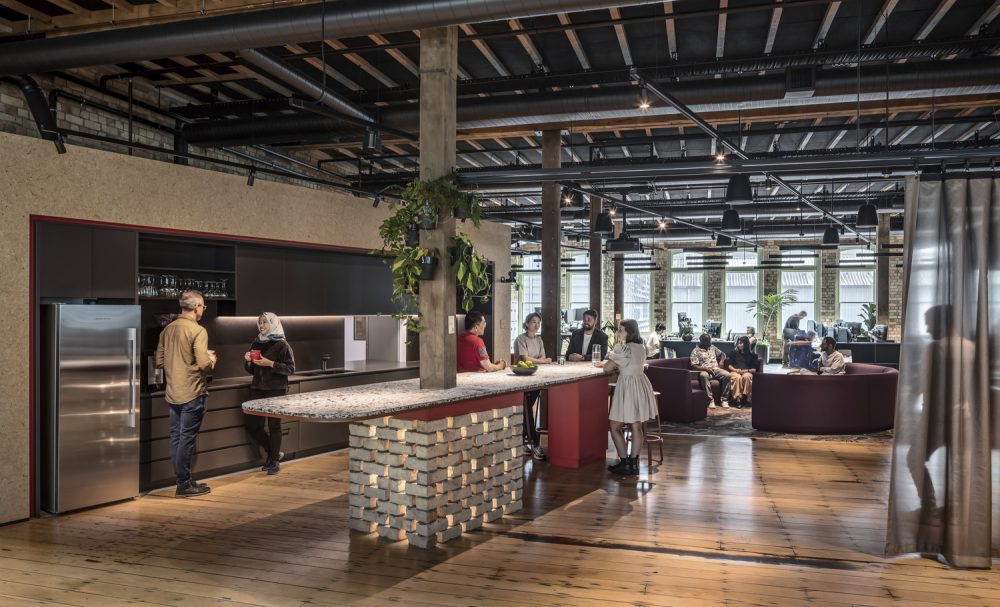Elise Cuneo, Principal at Unispace, is looking toward the future of work with these three strategies that are projected to make the most impact in 2025.
The way we work has changed for good, permanently reshaping how we connect, collaborate, and create value. Stepping into 2025, it’s clear that a successful workplace is not a static entity—it’s a dynamic, ever-evolving space designed to meet the diverse needs of a hybrid workforce.
While organizations continue to prioritize well-being, productivity and innovation, many are increasingly recognizing that a strong culture and sense of belonging are equally vital to success. By aligning employees with their mission and values, companies foster deeper engagement and cultivate a more cohesive, connected community.
To build on this growing recognition, workplace leaders should embrace design strategies that go beyond functionality, creating spaces that inspire, promote well-being and enhance connection. The following three strategies will be essential in crafting workplaces that empower individuals and teams to thrive in 2025 and beyond.
1. Embrace Cultural Integration and Connection
Effective workplace design should serve as an extension of a company’s culture and mission, strengthening brand identity while fueling a sense of pride and purpose. This connection goes beyond aesthetics or metrics, influencing how spaces support collaboration, creativity and inclusivity. When employees see their workplace as a reflection of shared values, it boosts engagement and morale.

Celebrating diversity through art is one powerful way to bring a connective culture to life. That’s largely why Unispace’s Art for Impact program helps clients share use art to express their unique culture. In one case, we partnered with muralist Robert Vargas to visually represent law firm Orrick’s work with of A New Way of Life, a community group helping formerly incarcerated women reincorporate back into society.
Organizations can also spur engagement on a deeper level by creating immersive, community-oriented spaces that reflect the company’s brand identity. For example, Kenvue’s new World HQ features an Insights Lab and store that takes customers on the ‘path to purchase’ journey, through interactive digital and physical experiences. In many settings, strategically planned, brand-driven spaces and hubs plus moments of surprise and delight can spark opportunities for interaction, knowledge sharing and serendipitous connections. In designing our own NYC studio, for instance, a central gathering space was the focus—a place to come together with each other and our clients.’
2. Prioritize Employee Experience and Personalization
We all know that hybrid work is here to stay. To encourage in-office presence without the need for mandates, the workplace must offer flexibility, tech, and personalization that may not be available at home.

A truly personalized workplace begins with accommodating different work styles—whether employees are collaborating, focusing, or needing a quiet break. For example, in our design for DoubleVerify in New York, we created a ‘club house’ blend of versatile spaces and settings that could easily transition from collaborative to focused work, empowering employees to choose what works best for them in the moment.
Personalization doesn’t end with the layout; it extends to the tools and features that make workdays smoother and more enjoyable. Ergonomic furniture, adjustable task lighting, and acoustic solutions are small details that can have a big impact on comfort and productivity. These thoughtful touches are becoming more common in our projects, such as in a private equity project in NYC, where ambient and task lighting were prioritized over traditional overhead fixtures to create a more tailored, inviting setting.
Technology is the final piece of the puzzle, seamlessly connecting in-office and remote teams. When systems are designed to enable parity of experience—enabling everyone, regardless of location, to collaborate and contribute with ease—they create a feeling of unity and connection across teams.
3. Champion Inclusive Design
Spaces must be accessible and welcoming for all—accommodating physical and neurological needs as well as diverse working styles. To achieve this, each workplace design needs to consider:
- Universal design principles, which require spaces be usable by everyone, regardless of ability or age;
- Sensory factors like acoustics, lighting, and air quality, which can significantly impact employee well-being and productivity; and
- Flexible work arrangements such as remote work and flexible hours that can accommodate the needs of employees with disabilities or caregiving responsibilities.
Designing Workplaces that Inspire and Evolve
The workplace of 2025 is more than a space—it’s a dynamic ecosystem that must adapt to the evolving needs of a diverse workforce. By embracing connective, experiential, and inclusive design, organizations can create workplaces that foster belonging, well-being and innovation alike.
These strategies aren’t just about aesthetics or short-term gains; they’re about building workplaces that reflect the values and aspirations of the people who inhabit them. As organizations continue to navigate the shifting landscape of work, thoughtful design will help organizations unlock the full potential of their workforce and secure a competitive edge for future success.

